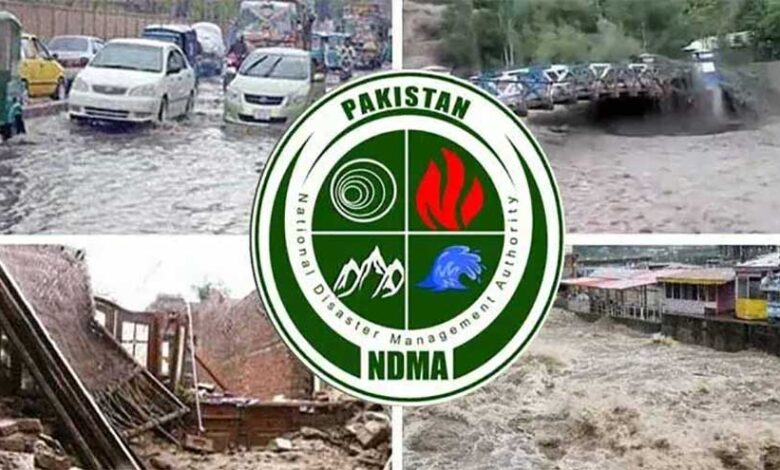Strong monsoon currents cause the NDMA to issue an alert, causing rain to fall in some areas of the nation.

Tuesday night’s moderate to heavy rainfall in Islamabad and parts of Punjab, including Lahore and KP, caused power outages in a number of locations and caused rainwater to pool in low-lying areas.
Rainfall in Lahore is intermittent, accompanied by lightning and strong winds, which improves the weather and relieves mugginess.
However, until July 10, the National Emergencies Operation Center (NEOC) of the National Disaster Management Authority (NDMA) has issued a two-day alert due to the possibility of heavy rainfall and flash flooding in major river catchments due to strong monsoon currents from the Arabian Sea and Bay of Bengal combined with a westerly wave.
With a high probability of both riverine and flash flooding in susceptible areas, NEOC predicts that these weather conditions will bring moderate to heavy rainfall, especially over major river catchments.
Residents in areas that are at risk are urged by authorities to remain informed and take the appropriate safety measures.
Increased water flows are anticipated in all of the major rivers, including the Kabul, Indus, Jhelum, and Chenab, according to the NEOC’s forecast.
On the Indus River, low flood levels are currently being seen at Tarbela, Kalabagh, and Chashma; Taunsa is also anticipated to fall below the low flood threshold.
Low flood levels are anticipated in the Chenab River at the Marala and Khanki stations. While the Swat and Panjkora Rivers, as well as the streams and nullahs that are connected to them, may swell as a result of rainfall in their catchment areas, the River Kabul at Nowshera is predicted to rise to low flood levels.
Increased inflows into the Jhelum River and its tributaries are predicted to cause localized flash floods. It is anticipated that inflows at the Mangla Dam on the Jhelum River will surpass the low flood limit.
Nullahs from the Pir Panjal range in northeastern Punjab might see notable rises in water levels, potentially leading to medium-intensity floods. It’s possible that hill torrents in the districts of Rajanpur and Dera Ghazi Khan will reactivate and produce medium-to-high flows. High flows are also anticipated in Balochistan’s nullahs and seasonal streams in the northeastern districts, such as Jhal Magsi, Kachi, Sibi, Qila Saifullah, Zhob, and Musakhel. Increased water discharge from the Hunza and Shigar rivers in Gilgit-Baltistan could result in flash flooding in their tributaries, which include the Hispar, Khunjerab, Shimshal, Braldu, Hushe, and Saltoro Rivers.
It is advised that people who live close to rivers, streams, and nullahs be on the lookout for unexpected rises in water levels, especially at night or during periods of heavy precipitation.